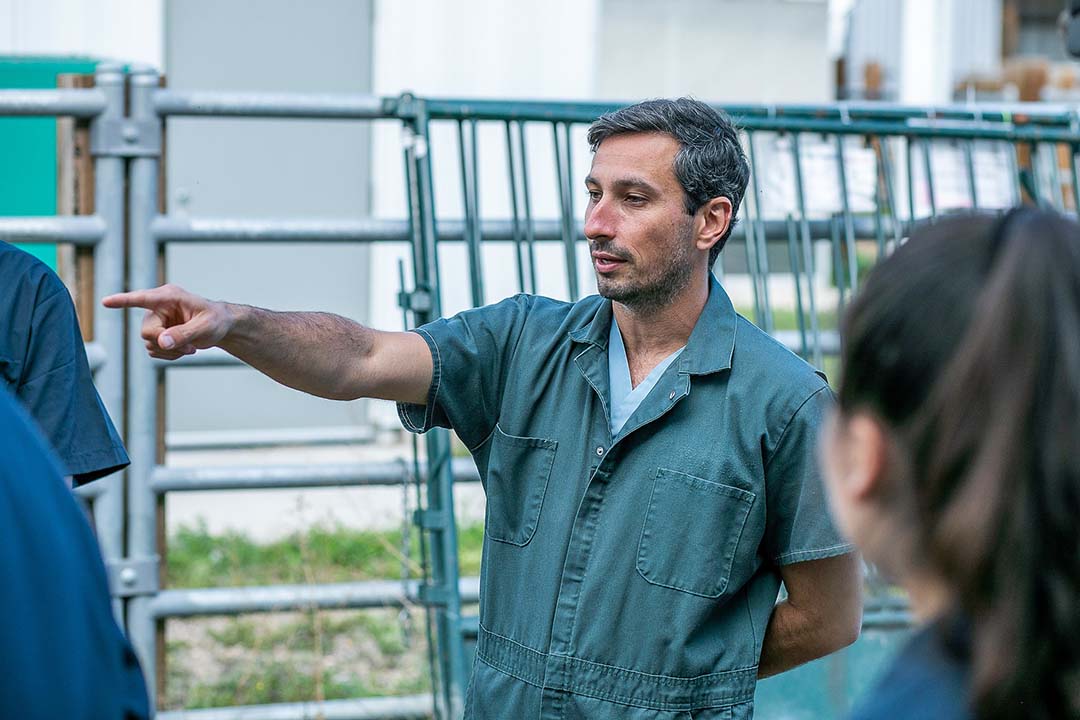
Groundbreaking USask research identifies cause of pig ear necrosis
It’s a problem that’s made its way through pig farms around the world for decades, with no clear cause or solution.
By Matt Olson, Research Profile and ImpactBut new research from the University of Saskatchewan (USask) has identified the cause of pig ear necrosis, a painful and troublesome affliction that causes the ear tissue of pigs to rot away.
“It's been around for so long and we were unable to effectively control it,” said Dr. Matheus Costa (DVM, PhD), an associate professor with USask’s Western College of Veterinary Medicine (WCVM) and an expert in swine health. “I think now we can finally take a step towards controlling the disease and improving the quality of life of these animals.”
Costa said pig ear necrosis was described in the 1960s, but it has been nearly impossible to identify what causes it. Costa described it as a very “ugly” condition that causes a pig’s ear tissue to “necrotize,” or progressively rot. It is painful and damaging for the pigs, causing lesions and affecting their growth and profits for producers.
“It was previously described as a multifactorial disease, likely because we didn’t know what was causing it,” Costa said. “We kept seeing it, it was always there, everyone talked about it ... and obviously the pigs suffer.”

While pig ear necrosis itself is not a fatal disease for pigs, the bigger issues lie with the secondary ailments that result from pig ear necrosis. The infection is painful, affects growth and meat production, and often leads to injudicious use of antibiotics.
Through clinical research at USask, Costa and his team identified an unlikely culprit – a rather common bacteria called Fusobacterium necrophorum found in the gastrointestinal tract of many mammals, including humans.
Pig ear necrosis only occurs when the bacteria are transferred via saliva through biting or chewing ears, an identified habit of pigs. Costa and his team were able to confirm their findings in a lab setting, and their research was recently published in the scientific journal PLOS One. Their research received support from Saskatchewan’s Ministry of Agriculture and numerous members of the Western Canadian swine industry.
Costa described their findings as being truly heartening for him as a researcher exploring this affliction since his residency program.
“When we had that light bulb moment ... it was a light at the end of the tunnel, that we can help improve the welfare of those animals for something that has been around for much longer than 50 years,” he said.
Not only were Costa and his team able to identify that the cause of this decades-old affliction was an opportunistic bacteria, but they have already developed a vaccine to protect against pig ear necrosis.
Because the causative bacteria are so prevalent, Costa said removing it completely from pigs would be unrealistic. Instead, by using a research vaccine developed at USask, Costa said they were able to reduce the clinical signs of pig ear necrosis by approximately 50 per cent. With the help of USask’s Innovation Mobilization and Partnerships office, a patent application for the vaccine has already been filed.
There are measures that can be taken to prevent the spread of pig ear necrosis. Biting of ears and tails is a habit of “bored” pigs without enough stimulation in their pens – and since the spread of the bacteria is affected by this behaviour, Costa said steps to improve pig welfare will be key to preventing pig ear necrosis from spreading.
Looking to the future, Costa hopes this research will help the agricultural industry know breakthroughs are being made regarding pig ear necrosis, both in its cause and its prevention, to help farmers handle the infection in the future.
“We don’t fully understand (pig ear necrosis) yet. There’s a lot of research to be done about disease pathogenesis and progression. How does it develop? What can we do to better prevent it?” Costa said. “There are many, many different venues this research will impact when it comes to the swine industry.”

